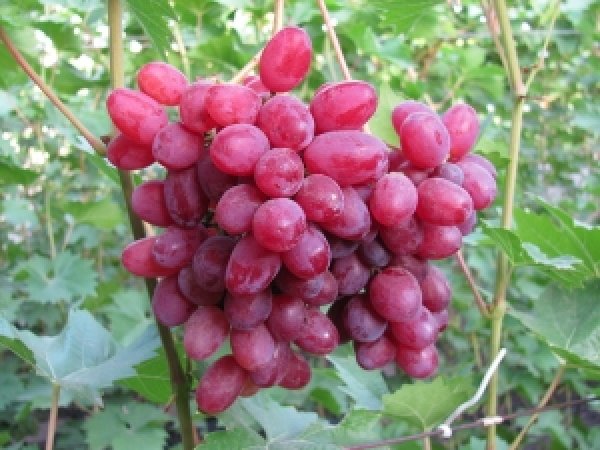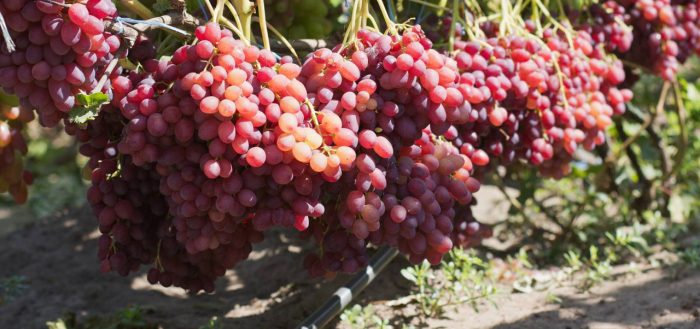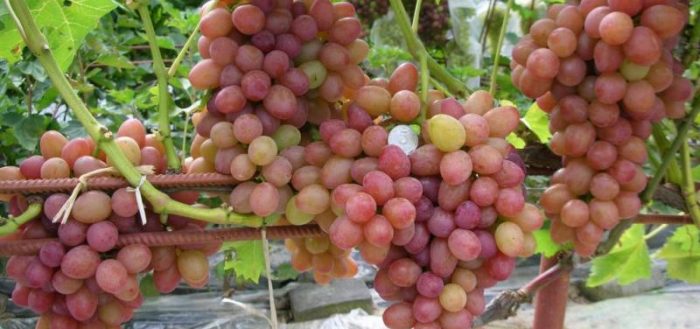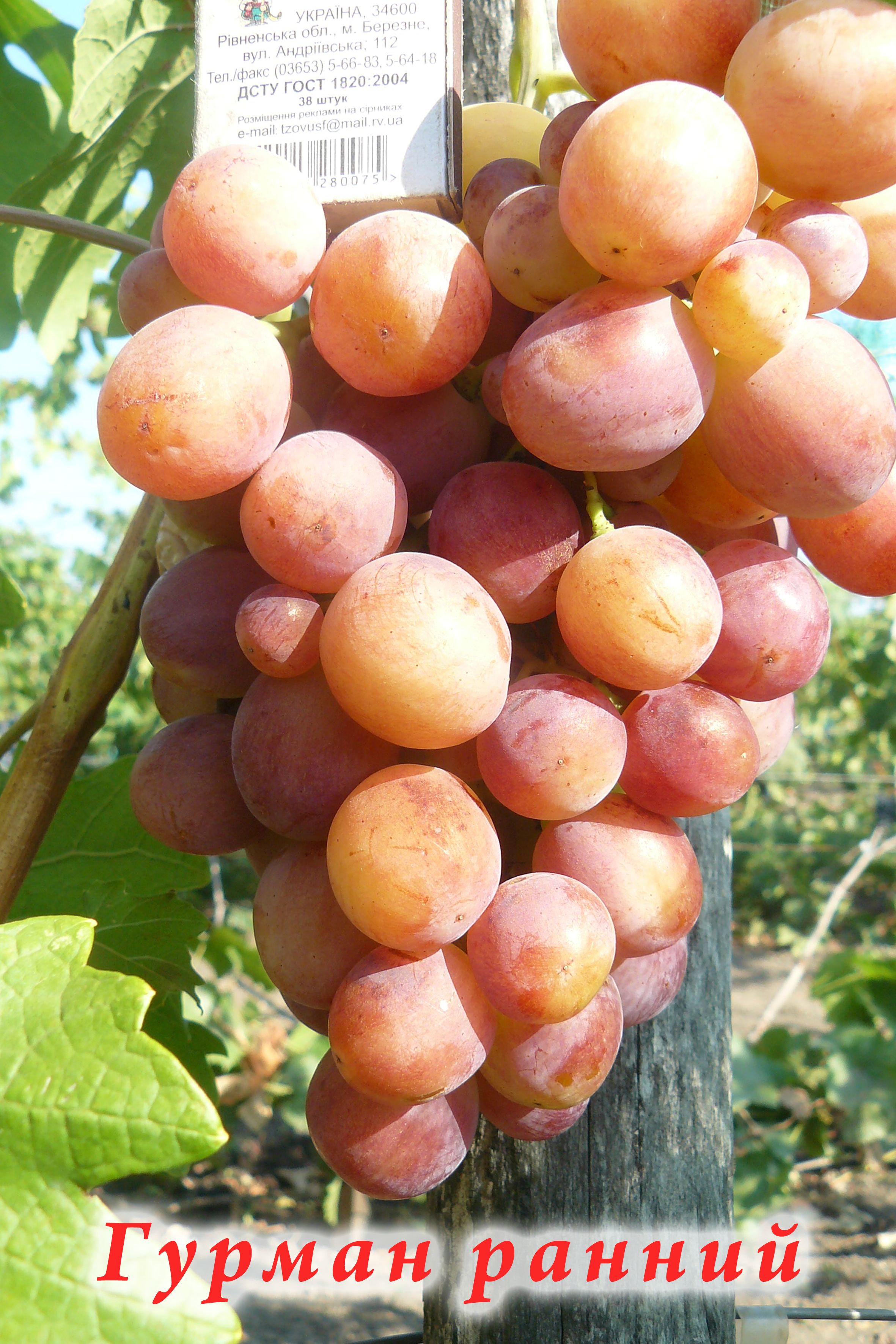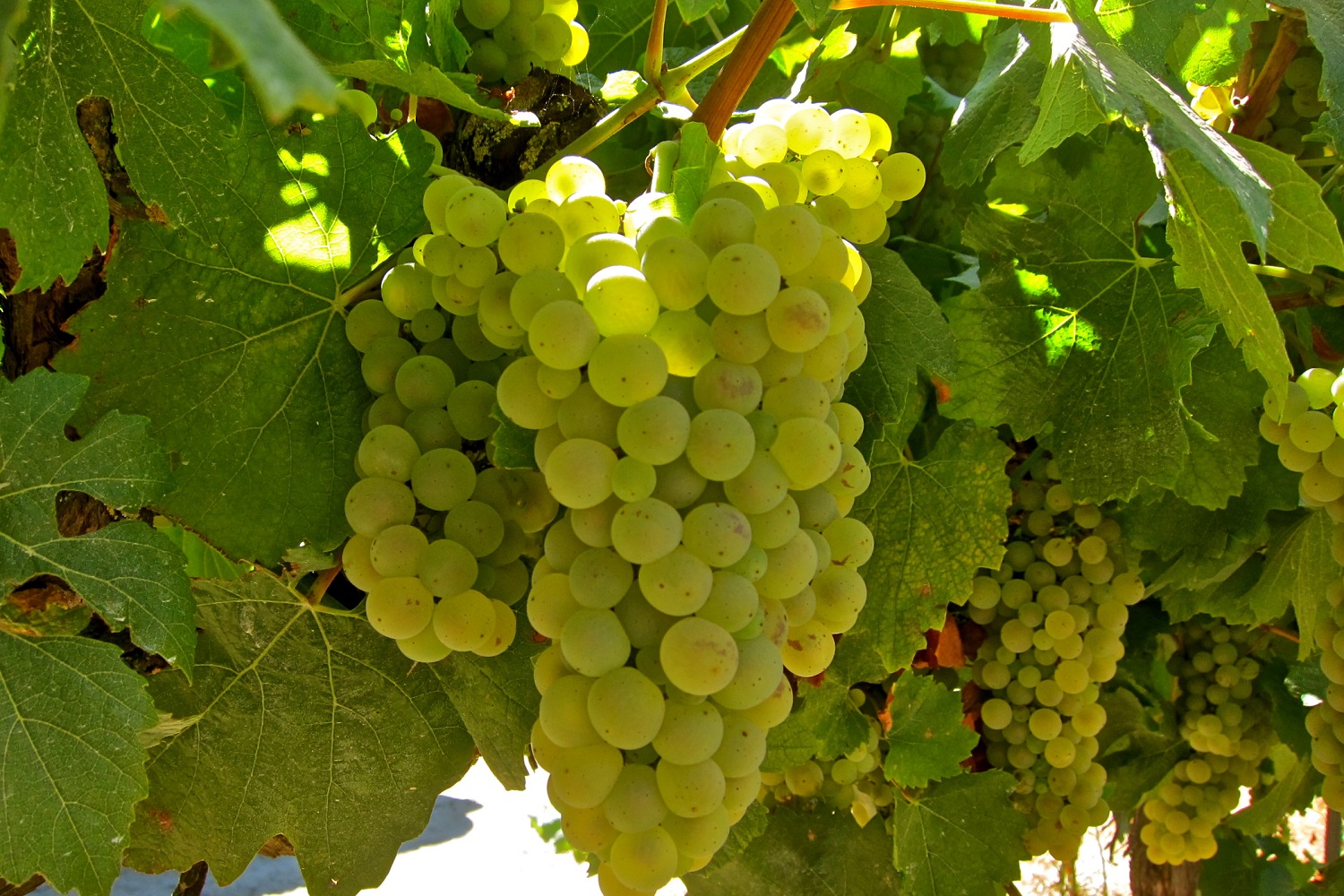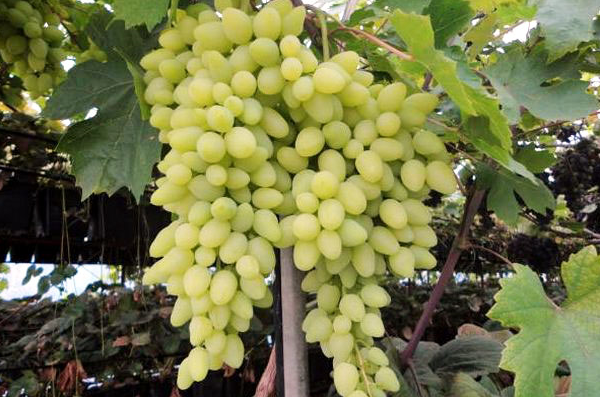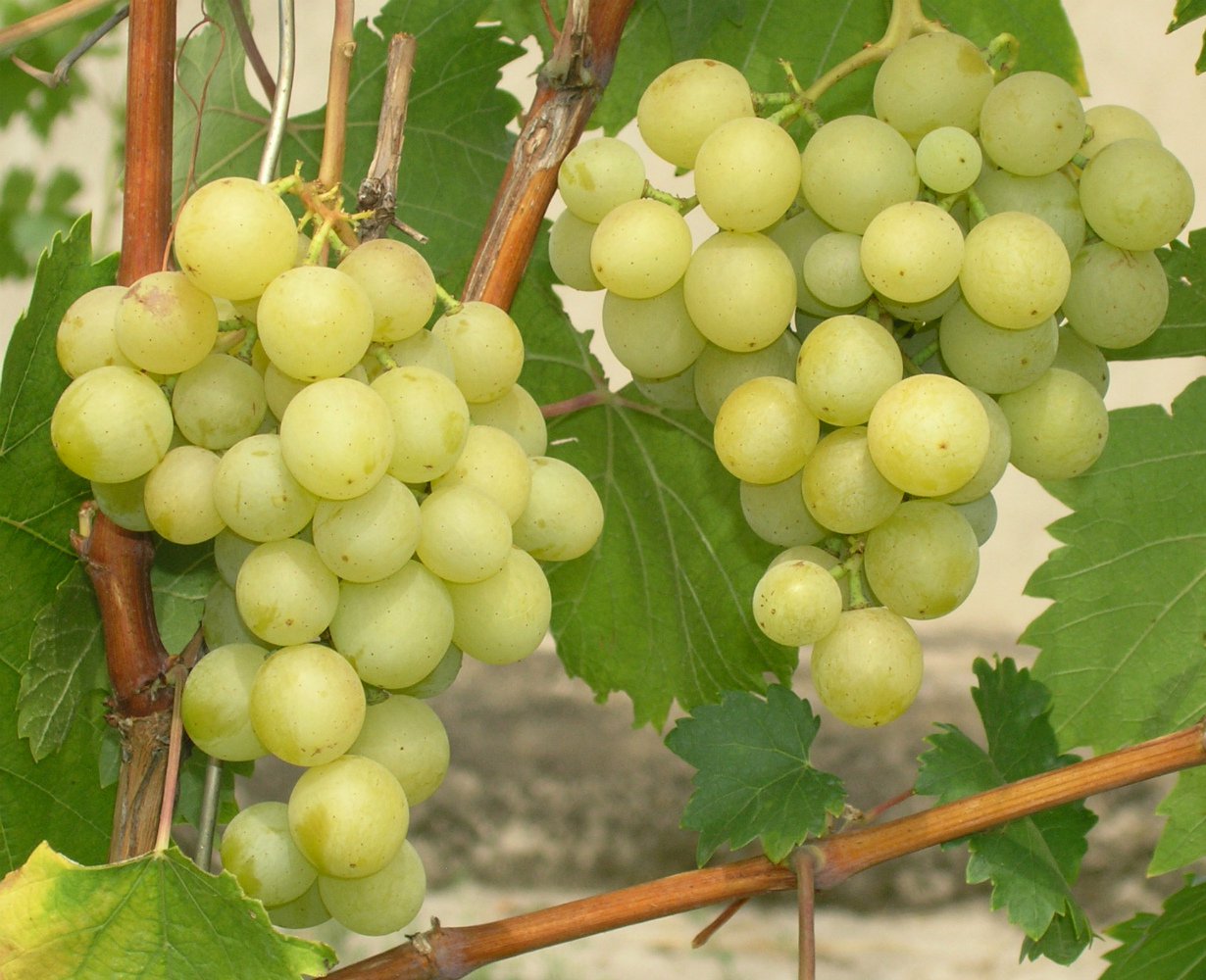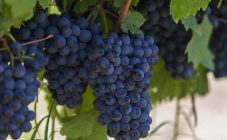Content:
Grapes are a real storehouse of useful vitamins and minerals. Among the many varieties, the Sofia grape is distinguished, which is famous for its perfectly smooth berries. This variety was obtained by a Ukrainian winegrower by crossing the varieties Arcadia and Luchisti Kishmish. A special feature of Sofia is its high yield and large fruits, like that of Arcadia, and the taste of nutmeg taken from Kishmish.
Description of Sofia grapes
Sofia belongs to the early maturing varieties, has a growing season of 110 days. The variety has low frost resistance: it can withstand cold weather under the covering material. Reeds, oilcloth or straw are used as shelter. The grape also has an average disease resistance.
The variety has a vigorous vines of deep brown color. The leaves are green, large, have a slight dissection and wavy edges. There is no pubescence on the leaves. In the autumn, the foliage changes color to yellow.
Sofia is famous for its large conical clusters, the weight of which can reach 1 kg or more. The berries fit tightly to each other, there is no looseness.
The berries are characterized by a round shape, heavy weight up to 15 grams, thin skin, juicy pulp with nutmeg aroma. In a bunch, the berries are the same size. The pulp has no more than 2 seeds or no seeds.
Sophia has unisexual female flowers, so a pollinator must be present. The variety has long flowering.
Sofa cuttings easily adapt to new conditions and take root well.
Sofia has a high yield thanks to its vigorous shrub. The shoots ripen at the same time because everyone is getting enough nourishment.
Agrotechnics
Caring for Sofia requires an attentive and careful attitude. To get a great harvest, you need to properly water, prune and feed the grapes.
Watering
Sofia is very demanding on watering: this should be done regularly, but not too abundantly.
Watering is carried out 5 times per season, when:
- the kidneys open
- flowering begins,
- ovary growth begins,
- after harvest,
- late autumn.
One grape bush should have up to 60 liters of water for normal irrigation and up to 120 liters for late fall irrigation.
Top dressing
Grapes are very picky about feeding. It is combined with watering. An excess of nitrogen fertilizers will negatively affect the condition of the plant. For good development, these grapes need potassium-phosphorus fertilizers. From organic, it is recommended to use manure, diluted in water or laid in the form of mulch.
Bush formation
To keep the yield stable, they regularly prune the bush. 7-8 buds are left on the vines. The difficulty in forming a bush lies in the ability to ration the crop. If you leave a lot of berries, the bush will be overloaded, and not all vines will be able to ripen. If the number of berries is greatly reduced, the growth of empty shoots will increase, which will lead to a decrease in the frost resistance of the buds.
Reproduction
You can use 2 methods of propagation: cuttings and layering. To obtain a layering, the young shoot is sprinkled with soil and watered regularly. After a year, this process becomes an independent plant, and it can be planted separately from the mother bush.
For planting, a pit of 70 * 70 cm is prepared, at the bottom of which fertile soil and fertilizers are laid. When planting a seedling, it is important to spread the roots so that they do not get confused. The seedling is covered with soil and watered.
Choosing a landing site
Sofia belongs to the thermophilic varieties. But too high temperatures and direct sunlight reduce yields. When choosing a place for planting grapes, you must pay attention to:
- Illumination. The site should not be shaded by buildings or tall trees.
- The presence of drafts. Bushes are best placed on the south or southwest side of buildings to protect the flowers from fencing.
The soil must be selected fertile, since the growth and development of the bush depends on it. If there is poor soil, then a lot of fertilizer is applied. Sand is added to clay soil, and clay is added to sandy soil. You also need to take care of the drainage system to prevent waterlogging of the soil.
Harvesting and storage
Ripening occurs in early August in the southern regions. The bunch is cut off, leaving a 5 cm tail.
During transportation, the grapes are tightly placed in shallow boxes. The dense skin of the berries makes it easy to carry the transportation.
Harvests can be stored in a dark, cold room or refrigerated. Grapes are consumed fresh, used for making compote, juice and raisins.
Grape disease
Sophia's resistance to mildew and oidium diseases is low. Prevention is recommended to be carried out at least three times per season. You can use the following remedies against fungal diseases:
- Fungicide TILT-250,
- Fungicide Ridomil,
- Bordeaux liquid,
- Lime-sulfuric broth.
In addition to fungal diseases, the grape harvest can be threatened by birds and wasps. Long strips made of rustling and shiny materials such as foil will help protect the grapes from birds. Another way is to stretch a net around the vineyard.
Insecticides can be used against wasps. But the time of their use is limited by the ripening period of the berries. It is also necessary to destroy wasp nests as they are found. The most convenient way of protection in viticulture is considered to be covering the bunches with tissue bags. They will protect the berries from both birds and wasps.
The advantages of the variety:
- Early ripening.
- Delicate sweet berries with a nutmeg flavor.
- The variety tolerates southern winters well. For colder regions, for example, in the Moscow region, the vine needs shelter.
- During the dry season, it continues to bear fruit. But with prolonged drought, the bunches must be hidden under the leaves.
- The seedlings quickly adapt to new conditions.
- The bunches have an attractive presentation and are easily transported.
- The berries can be eaten fresh and processed into juice.
- Good immunity.
Disadvantages of the variety:
- Gray mold can destroy crops.
- When overripe, the berries crack and crumble.
- Dense clusters may start to rot.
- The female flowers of Sophia can be pollinated from other nearby varieties.
The Sofia grape has attractive characteristics: the clusters are large, dense and well transported, the berries are sweet with a nutmeg flavor, and the cuttings take root quickly. But in order to get a rich harvest, it is necessary to carefully look after Sofia and take into account the agricultural technology of the variety.
